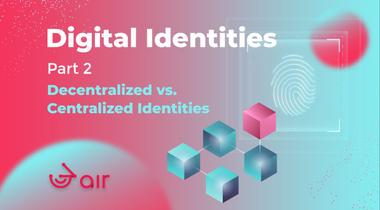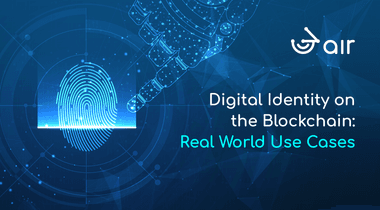Why the future of crypto is multichain
Let’s start by clarifying what multichain really means. With the exact definition not yet established, multichain is currently being used in 2 distinct ways:
- As a scaling solution within a blockchain ecosystem
- As the ability for an asset to exist on many different blockchains (Cross-chain)
Both these ideas solve different problems, so we’ll use the term “multichain” when we reference a scaling solution that has one base settlement layer across all it’s “multiple” chains and cross-chain when we talk about moving assets from one independent chain to another.
Why is going multi-chain important?
The main reason is competition over resources. Applications on a blockchain compete for the same limited resources (block space) and this leads to congestion issues and high gas (transaction) fees.
The other reason might be specialization of a chain: some chains are better optimized for a specific task and attract different types of developers, greater sovereignty or security.
At 3air, we build on SKALE Network as our main underlaying blockchain platform that our app is built on. SKALE already uses a multichain scaling solution, allowing 3air users to transact at zero gas-fees and on a fast, secure and scalable chain.
This is the power of a multichain setup.
Why is cross-chain important?
This is probably what you had in mind when you read the headline.
The basic meaning of cross-chain is to connect an asset throughout various blockchain ecosystems so that it can be moved and used across them seamlessly. This means that you can take a specific chain native coin and bridge it over to another chain to use it there. For instance, you can take your BTC and bridge it to Ethereum as wrapped BTC (wBTC). The BTC you own on the Bitcoin network would be locked for usage, and you can then use your wBTC on Ethereum Network. To get your BTC back you would need to burn the wBTC on Ethereum and with it release the locked BTC on the Bitcoin network.
Once an asset is bridged, it should be readily available on that network and perform all the features of assets native to that chain, including being tradable. This means you can buy wBTC directly on Ethereum without ever being forced to use the Bitcoin network.
This brings 2 major advantage to the users:
- You can more easily move liquidity from one chain to the other to chase the best opportunities and uses.
- To be able to use an application, you are not forced to use a specific chain that you may not be familiar with.
One could argue that to achieve the second option, a project could just deploy the app on all the chains and then release the token on each of the chains. But that would limit the option for price arbitrage and would mean that tokens would trade at different prices, bringing about confusion and disappointment. It would also mean that you would need to sell your token to obtain the liquidity to move it to another chain.
Cross-chain is also not only about token transactions, but also about cross-chain smart contract interoperability, messaging and function call layers.
At 3air we are all about usability. We understand that mastering blockchain transactions is not a small task. Adding another one to the list just to use an app will slow the adoption of any project.
Our goal is to deploy the 3air app on multiple chains and bridge the 3AIR token between them. This increases the chance that you will be able to use the 3air token on a chain you are most familiar with.
Security
While multichain security is not considered a great concern, it is the opposite for cross-chain transactions. According to a Chainalysis report, 13 hacks have been performed this year alone, resulting in over $2 Billion in stolen funds.
Bridges are an attractive vector of attack because they represent one centralized point of asset handling. This means that the attacker only needs to compromise one system in order to gain access. Blockchains themselves are fairly robust against attacks once they are decentralized enough, but the bridging usually happens with one project storing and locking up assets on one part and releasing them on the other. This is their main vulnerability. It needs to be said that this issue is also present for multichain systems, although they usually implement security solutions to prevent such attacks at the protocol level as it is their primary functionality.
Athough this security flaw is solvable with a clever and decentralized bridge set up (like Multichain or Cosmos), there is another issue that seems to be unsolvable - at least at this point in time.
It is shortly described in Vitalik Buterin’s Reddit post where he explains that security of a whole system is as good as it’s weakest link, though I would argue that in a cross-chain setup, the consequences of a hack are far greater that compromising each of its parts separately. We have essentially 3 parties in our cross-chain system:
- Native asset chain
- Bridge
- Bridged asset chain
We have covered the bridge security part, but there’s also the chain security part. On its own if a chain gets hacked, the consequences usually are not too severe. A 51% attack means that some transactions may get reverted so you may end up with a previous state. This may be a problem if you paid for something in the “real” world (which is a cross-bridge of its own). Aside from that, someone directly taking your money off your wallet should not be possible and not permitted at the base protocol level.
If that happens in a cross-bridge environment, the transaction that locked the assets on one bridge may release the asset on another bridge, then the first transaction is reverted and the attacker keeps both of the assets. This is possible because there is no direct tx dependency between the two chains in the bridge. Each of them work separately and they only have a central point, a bridge, were they communicate.
In that sense, it is important to only select trustworthy and time-proven blockchains that are sufficiently decentralized and have proven robust enough to be reasonably hack and tamper-proof. The same goes for the bridges.
Although this reduces the amount of chains we can securely bridge to, it focuses the list on the most adopted chains that actually make sense bridging with.
3air’s multichain plans
3air plans to deploy its applications on multiple chains, starting with SKALE and BSC. We recently announced our integration with OKX Chain. There are potential next targets that we aim for after a successful launch, like Near, Avalanche, Fantom and Milkomeda.
We have currently deployed our Digital Identity Solution on the SKALE test network, and our NFT marketplace is deployed on BSC. As we will use NFTs to provide access to our broadband internet services, the NFT market place is of key importance to 3air. We are currently in the process of deploying a cross-chain NFT marketplace on SKALE network and preparing the NFT to be bridgeable from BSC to SKALE and vice versa. Once the token is released on the BSC, we will provide a bridge that will also make it usable on SKALE.
These are the 3 main steps in our cross-chain interoperability.
The bridging will be gradual because of multiple reasons. For one, increasing the number of chains increases security risk, it consumes development and maintenance resources and it requires additional liquidity to support the token.
Conclusion
As the blockchain space evolves, the need for interoperability of chains will become more and more important. The projects that offer the easiest access to their services by the majority of potential users will be the winners. This is only possible with an effective movement of assets from one chain to the other.
Additionally, rapid evolvement and adoption of crypto has brought forth scalability issues, resulting in astronomically high transaction fees and long transaction times. The way it currently looks, multi-chain is being considered as one of the best solutions that may theoretically bring about infinite scalability.
The future for sure is multi (cross) chain, we just need to be on the lookout for the best solution as it probably has not yet been discovered. Until then, we will carefully choose and implement the best of the currently available options.










